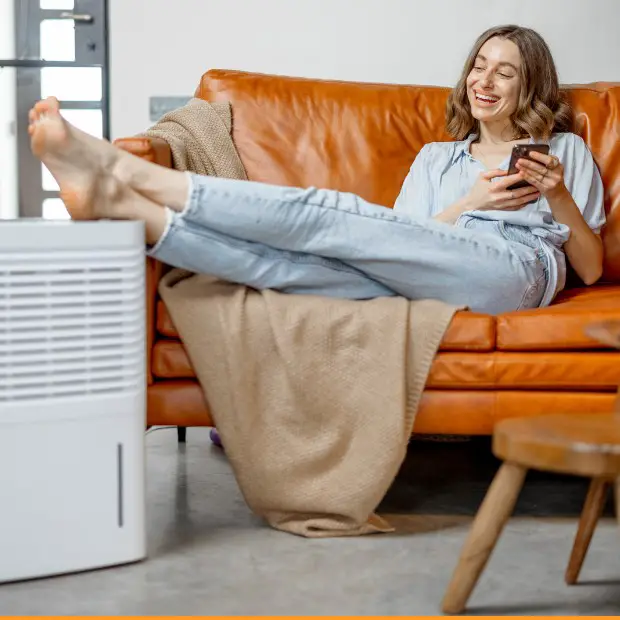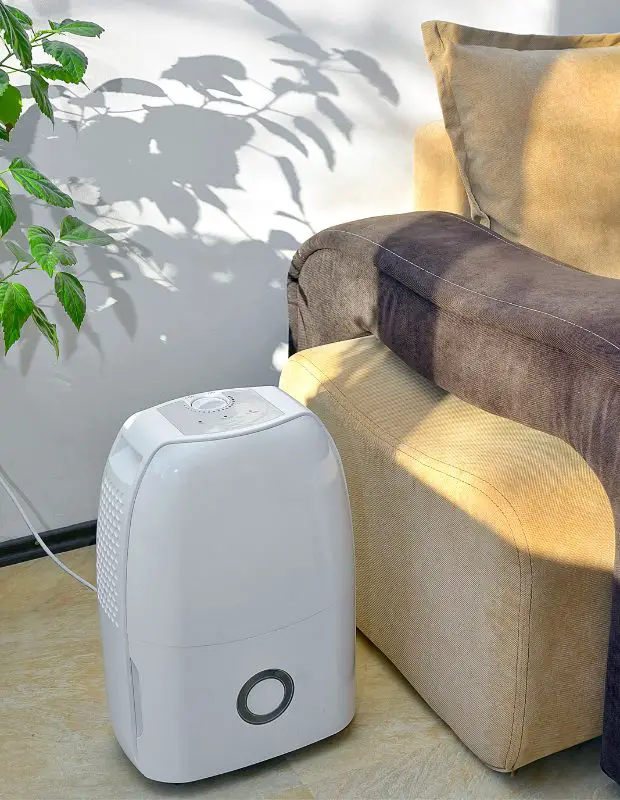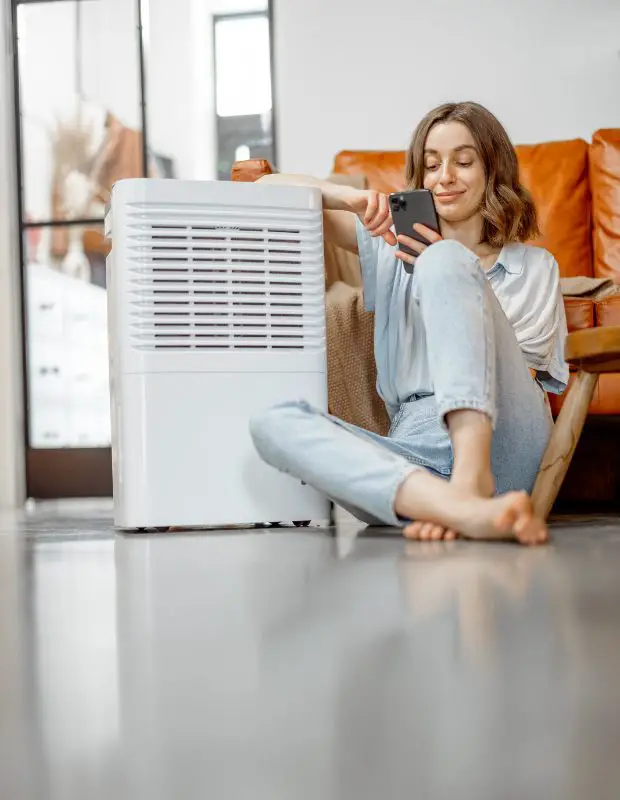
Dehumidifiers are useful appliances that remove moisture from the air, helping to maintain a comfortable humidity level in your home.
Excess humidity in the air can cause problems such as mold growth, musty odors, and damage to wood furniture and floors. Humidifiers help regulate the humidity levels and make the air more comfortable to breathe, which is extremely helpful if you’re working from home and living in a moist climate. In this article, you’ll learn how dehumidifiers work, what are their key components, and how to choose the right model for your home.
Why are dehumidifiers important for your home office?
Dehumidifiers can be pretty useful because they help regulate your home’s humidity level, making it more comfortable, especially if you’re regularly working from home. Excess humidity can cause respiratory issues and allergies, particularly in people with asthma or other respiratory conditions. Dehumidifiers can also help prevent the growth of mold, extend the longevity of your electronic equipment, and boost the air quality in your home. The best temperature for productivity is between 68 and 76 degrees Fahrenheit (20 and 24.4 degrees Celsius), with humidity levels between 35% and 60%. It’s great to have a portable temperature and humidity sensor in the rooms you spend most time in, so you can know exactly how to adjust the settings on your dehumidifier. With that out of the way, let’s see how a dehumidifier works.

Dehumidifiers usually take up a bit of space, but the modern models are rather pleasing to the eye.
How do dehumidifiers work?
Humidity Control
Kismile dehumidifiers draw in humid air and pass it over a set of cold coils. The moisture in the air condenses on the coils and drips into a collection bucket or drains out of the unit. The dry air is then passed over warm coils and released back into the room.
Types of Dehumidifiers
In the dehumidifier league, we have two main stars: the chill-inducing refrigerant dehumidifier and the moisture-munching desiccant dehumidifier.
- Refrigerant dehumidifiers are the most common type and use a refrigeration cycle to cool and condense the moisture in the air.
- Desiccant dehumidifiers use a desiccant material to absorb the moisture from the air.
Critical Components of a Dehumidifier
Compressor
The compressor is the heart of the refrigerant dehumidifier. It compresses and expands the refrigerant gas to cool and condense the moisture in the air.
Condenser Coils
The condenser coils are responsible for cooling the refrigerant gas, which causes the moisture in the air to condense on the coils.
Evaporator Coils
The evaporator coils are responsible for warming the refrigerant gas, which releases moisture into the air.
Fan
The fan circulates the air over the coils and throughout the room.

Many dehumidifier models come with a mobile app so you can monitor the humidity levels at home even while you’re away.
A few tips on how to choose the right dehumidifier for your home
Armed with newfound knowledge of dehumidifiers and their integral parts, you’re now ready for the grand quest of selecting the perfect moisture-battling ally for your home. Here are some factors to consider:
Size and Capacity
One of the key factors to consider when shopping around for a dehumidifier is its size and capacity. It will depend on the room size or area you want to dehumidify. A dehumidifier that is too small for the space will not be effective, while a dehumidifier that is too large will use more energy than necessary. Be sure to choose a dehumidifier that is appropriately sized for your needs.
Energy Efficiency
Dehumidifiers can use energy, so choosing an energy-efficient model is essential. Look for dehumidifiers with an Energy Star rating, which means they meet energy efficiency guidelines set by the U.S. Environmental Protection Agency. Choosing an energy-efficient dehumidifier is like a double win. It’s kind to your wallet by reducing your energy bill and also friendly to the planet by minimizing your carbon footprint.
Noise Level
If you plan to use your dehumidifier in a living area, bedroom, or other space where noise can be problematic, look for a model with a low noise level. Many manufacturers provide information on the noise level of their dehumidifiers, so be sure to check this before making your purchase.
Portability
Consider a portable model if you plan to move your dehumidifier from room to room or store it during the off-season. Portable dehumidifiers are lightweight and easy to move, making them a convenient option for homeowners.
Maintenance and Cleaning
Regular maintenance and cleaning are essential for keeping your dehumidifier working correctly. Look for a model with easy-to-clean filters and coils, and follow the manufacturer’s recommendations for maintenance and cleaning.
Price
Dehumidifiers can vary in price from less than $100 to several hundred dollars. Consider your budget and the features you need when choosing a dehumidifier.
Conclusion
Dehumidifiers are a vital asset to any home office. They protect your equipment, foster a healthier environment, and enhance comfort—boosting productivity in the process. Understanding their function and efficiency can help you choose the right one. A smart pick not only benefits your home workspace but also supports a sustainable lifestyle. Next up, you may want to explore a guide on how to start a b2b e-commerce business.
Hey there, welcome to my blog! I'm a full-time entrepreneur building two companies, a digital marketer, and a content creator with 10+ years of experience. I started RafalReyzer.com to provide you with great tools and strategies you can use to become a proficient digital marketer and achieve freedom through online creativity. My site is a one-stop shop for digital marketers, and content enthusiasts who want to be independent, earn more money, and create beautiful things. Explore my journey here, and don't forget to get in touch if you need help with digital marketing.

